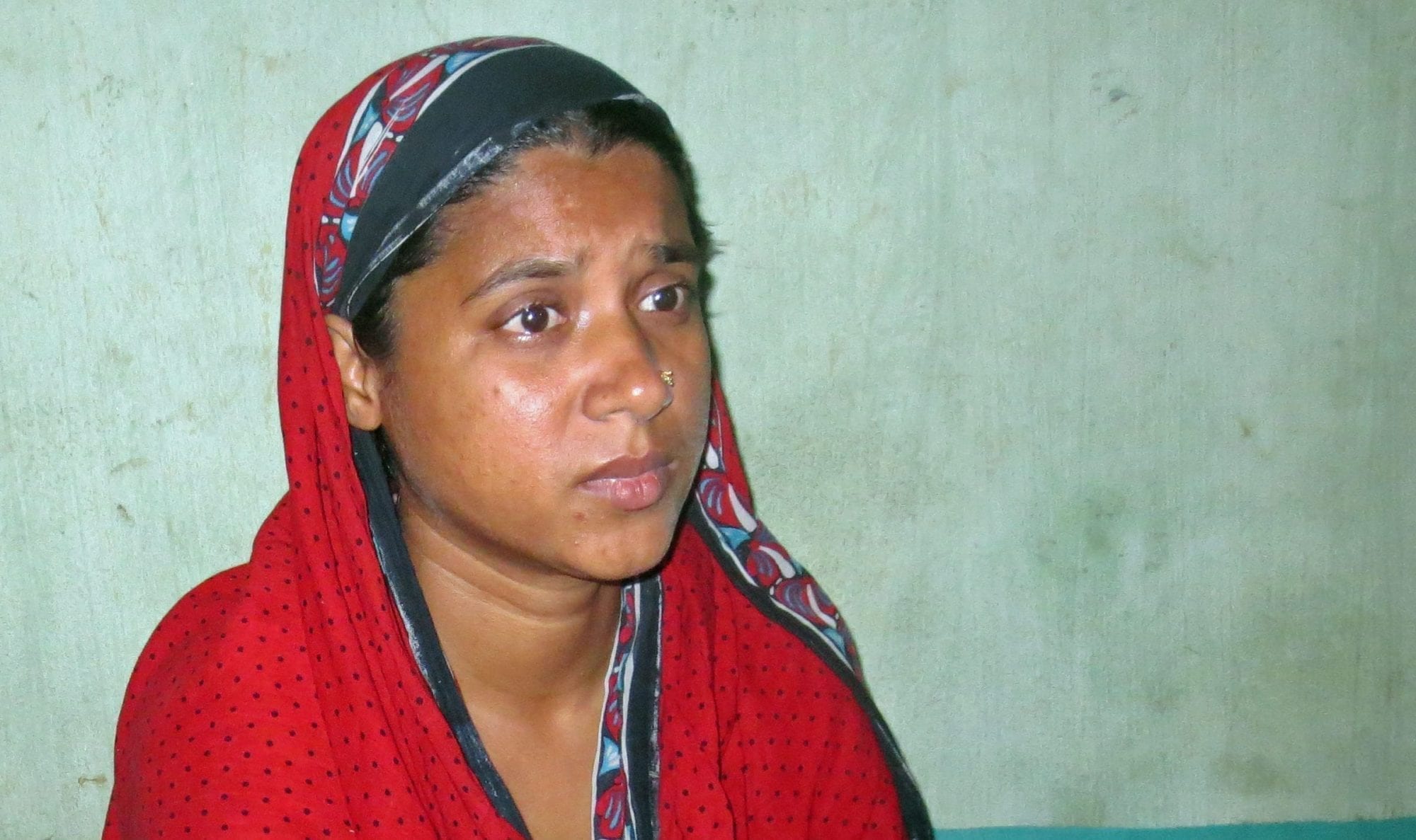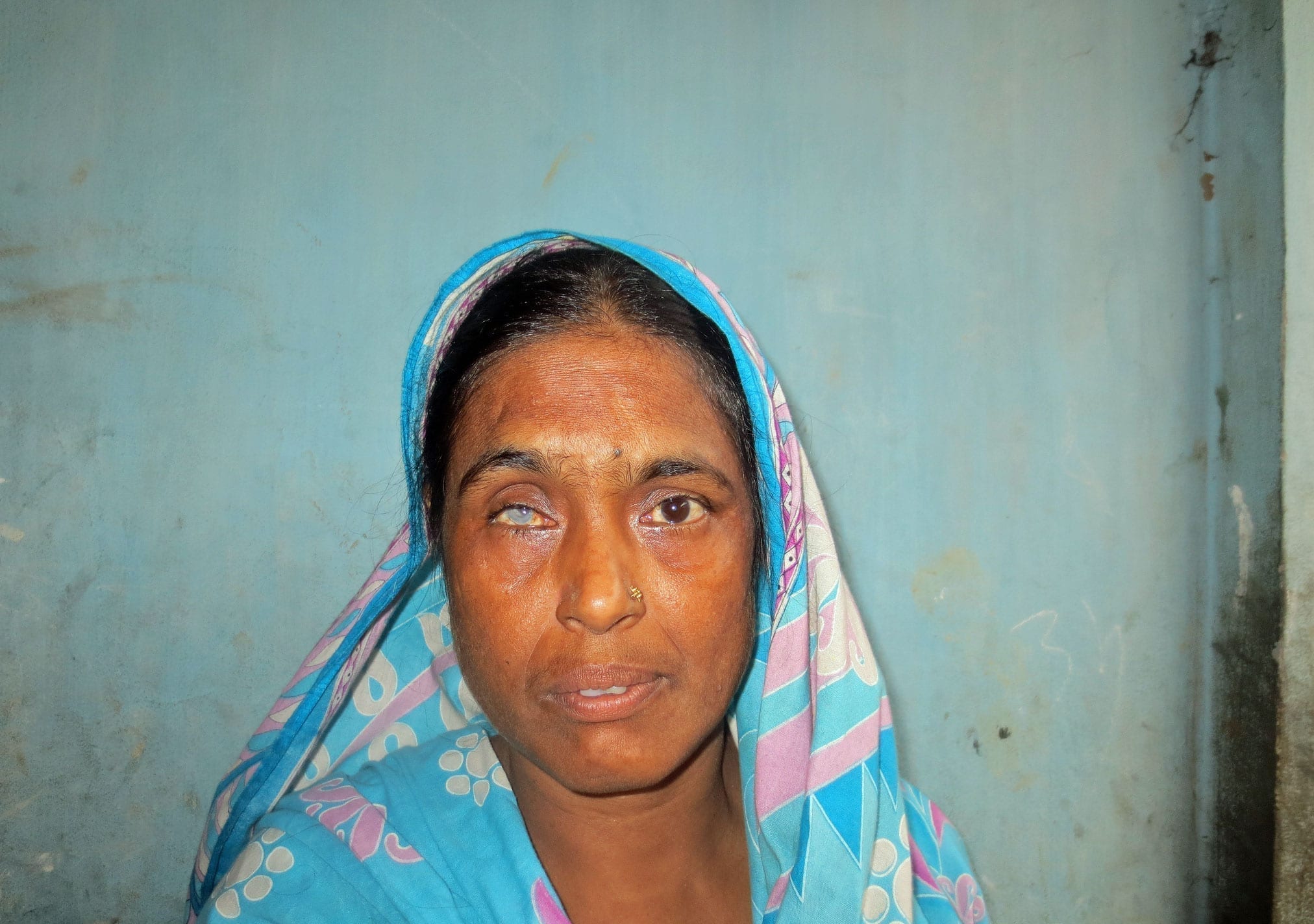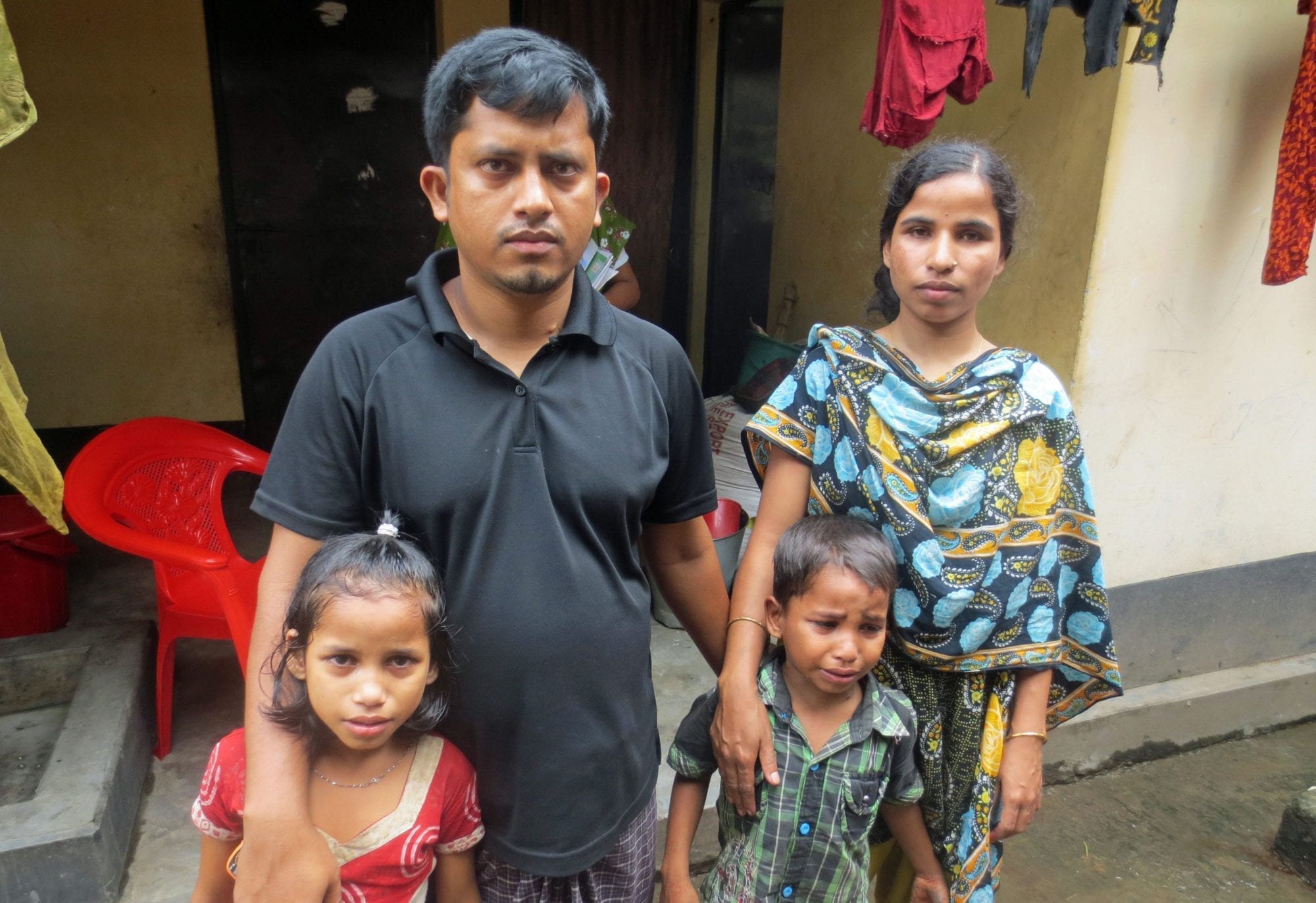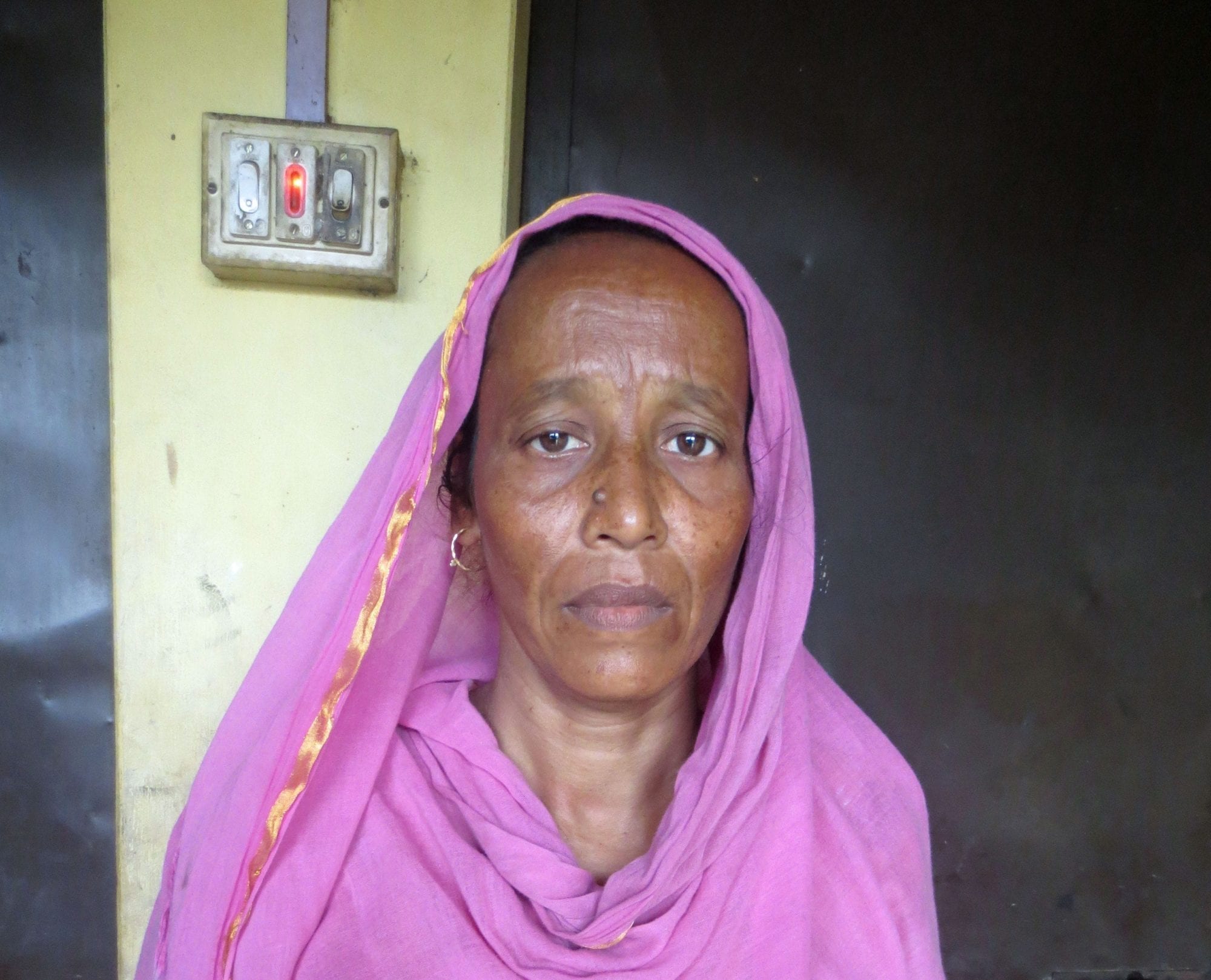Nov 25, 2013
A year ago, 112 garment workers were killed in a fire at the Tazreen Fashions Ltd. factory—and a thousand others were injured in the scramble to escape a building with no fire escapes and firmly barred windows.
On April 24, 2012, more than 1,200 garment workers were killed when the multistory Rana Plaza building pancaked in, crushing workers in five factories located in the building.
If these workers, nearly all young women, had been in unions, it’s likely these tragedies could have been prevented.
These disasters—and many more smaller, little-reported workplace tragedies—are why Bangladeshi garment workers are literally organizing for their lives.
Because of the international attention these disasters sparked, workers now can register their unions.
But they are facing intense employer resistance—including physical attacks, threats and termination—and some of these young leaders could benefit from hearing from experienced trade unionists that the fight for a union is worth the struggle.
The workers would be strengthened by international support, knowing they are not alone. To send them a messae of solidarity, please use the sample letter below or write one of your own. Send the completed letter to [email protected] and let these workers know that you stand with them. The Solidarity Center, which has worked for 20 years to help Bangladeshi garment workers gain a voice on the job, will translate and distribute the letter to its union partners, and your message will reach the workers who need to hear it the most.
_____________________________________________________________
SAMPLE LETTER
Dear Sisters and Brothers:
As fellow trade unionists, we are writing in solidarity to commend your bravery and to encourage you to stand together in the face of employer resistance.
Since the tragic Tazreen factory fire in November 2012, you have made great progress in your efforts to organize. Even though ready-made-garment factory owners and the Bangladesh government have placed hurdles and difficulties in your path, you have persevered.
As union members, we know what this struggle is like. We know how hard employers fight to keep the union out, going as far as harassing and firing activists and leaders. Employers will try and turn you against one another.
We know from experience the struggle is worth the difficult journey—the union is the best way for workers to stand up for their rights.
Keep up your amazing effort and find strength in each other. Do not give up! We are with you!
In Solidarity,

Nov 25, 2013
Tahera, 23, has been so ill from the injuries she sustained in the November 24, 2012, Tazreen Fashions factory fire, her husband Roshidul has had to quit his job to take care of her. Now, they have no income to support their family of four.
The blaze, which spread through the multistory factory outside Dhaka, the Bangladesh capital, killed 112 workers and injured thousands more. Like nearly all Tazreen survivors, Tahera jumped out of a window to escape the flames because the stairwells were locked.
“I have severe pain in my whole body,” Tahera said, crying. “I don’t feel any strength in my body now. Although one year has been passed, I can’t sleep properly because of fear. I try to forget the memory of the Tazreen’s fire accident, but I can’t. Sometimes it seems to me that I will not live any longer.”
Her physical injuries are severe, as are her mental and psychological suffering. As panicked workers broke windows and ripped open air shafts to escape the building, the electricity went out while the blaze spread. Tahera fell in the melee, and her head and chest were trampled.
“Following the fire accident, Tahera behaved abnormally,” says Roshidul. “She used to try to leave the house all the time, even at night. I used to sleep in front of the door of house so that she could not wander out. Following the accident at Rana Plaza, she used to cry loudly watching those scenes on television and, even one year after the accident, whenever my wife watches any scene of fire on television she becomes so scared she cries.” In the Rana Plaza disaster, more than 1,200 garment workers were killed April 24, 2013, after the multistory building housing five garment factories near Dhaka collapsed.
“Even now, I can’t remember any one’s name, sometimes nothing,” Tahera said.
Tahera and her husband are borrowing from shopkeepers to survive and do not know how they will pay rent for their home in Savar, near Dhaka. “Our present financial condition is very poor, which it was not before the accident,” said Tahera. They have a 14-year-old daughter and 2-year-old son, but Tahera says, “I can’t pay the tuition fees of my daughter, I can’t buy milk for my little son and I can’t remember anything.”
Roshidul said nearly all of the money they received for Tahera’s injuries from the Bangladesh Garment Manufacturing and Exporting Association (BGMEA) was spent on her medical care. He also used up his savings for her treatment. Now, there is no money left. “I haven’t been able to take her to the doctor or buy medicine for her treatment for the last two months,” he said. Tahera and her husband say families like theirs have been forgotten.
Tahera came to Dhaka nine years ago, hoping to better her life. Now, all she wants is enough support to get medical treatment and ensure her family has a place to live and food to eat.

Nov 22, 2013
“Now my life seems worthless,” Shahanaz Begum said, crying. “I cannot see through my right eye. I have problems in my spinal cord and can’t even walk properly. I cannot sit because my left leg was broken (and did not heal well), my right leg is filled with blood clots and I cannot lift heavy weight.”
Shahanaz sustained all these injuries while fleeing the burning building where she worked, the Tazreen Fashions garment factory. The only way she could escape with her life was to jump through a window: The building had no fire escapes and the stairs led to the burning storage room on the first floor. And the only reason she is alive today is because she defied the factory manager who told her she could not leave.
A year ago this weekend, 112 garment workers died in a fire that burned Tazreen Fashions, located in the outskirts of Bangladesh’s capital, Dhaka. Women and men working overtime on the production lines were trapped when fire broke out in the first-floor warehouse. Workers scrambled toward the roof, jumped from upper floors or were trampled by their panic-stricken co-workers. Some could not run fast enough and were lost to the flames and smoke.
Shahanaz’s daughter, Tahera, also worked at Tazreen. Since the tragedy, Tahera’s mental state is fragile. Shahanaz’s husband married a second wife after Shahanaz lost her right eye in the disaster and, now with two families, he only occasionally provides Shahanaz with financial support. With her injuries, Shahanaz says, “I am not able to work and I don’t think that I will be able to work anymore.”
As a result, she has stopped taking her medicine because she cannot afford it. She can no longer support her mother, as she did before. And she is unable to pay her rent. She spent the compensation she received after the disastrous fire (from the Bangladesh Garment Manufacturers Employers Association and two private organizations) on the extensive treatment she required in four separate hospitals.
For the survivors of the Tazreen fire and their families, Shahanaz’s untenable situation is far from unique. Shahanaz and many other workers who survived the events of that awful evening now face very uncertain futures, abandoned by the factory owner, the brands and the government and left with few resources to deal with the financial and emotional disaster they continue to experience.

Nov 22, 2013
Nasima, 25, cannot neither breathe nor see well these days. She speaks softly, too weak to raise her voice. Nasima escaped the November 24, 2012, Tazreen Fashions garment factory fire in Bangladesh with her life, but her injuries from the disaster are so extensive that she can no longer support herself and her family. “I don’t have the strength to work in the garment factories anymore,” she says.
Nasima works in her landlord’s house for food but has been unable to pay rent for the past four months. Her husband cannot work because of a heart condition, and their daughter and son may not be able to continue in school because the family has no money to pay their school fees.
“I am always worried about my family’s future. How will I survive? Day by day my situation is getting worse,” she said, weeping.
She sold all possessions she had left in her home village to pay for her medical expenses, but cannot afford the CAT scan her doctors recommend.
On the day of the Tazreen factory fire, which killed 112 workers and injured thousands more, Nasima said, “even after the fire alarm, I was warned by other workers that if I leave, I will be terminated.” With two small children at home, Nasima said, “I wanted to go out. But the factory manager and the production manager had forbidden me to do that. They said nothing was happening.”
She left her work station and made it to the second floor. “I asked others to somehow let me go out of the building. I was lifted to the shoulder of a mechanic and thrown to the roof of the nearby building.”
Following the Tazreen disaster, Nasima received $320 and a little food from two private organizations. She says she received a call from the Bangladesh Garments Manufacturing and Exporting Association (BGMEA) regarding compensation, but the employer group later refused to give her money, saying she would get it in the future if it were available. A year later, Nasima has received nothing.
Nasima hopes for compensation from the employers and the government—enough to enable her to survive if she can never return to work. “I am in this condition while doing their work,” she said. Nasima wants her children to get education so they will not struggle to survive. She wants to get well soon and go back to work.

Nov 22, 2013
Raoshonara is destitute. “I have no other option but begging to survive,” she said, and burst into tears. The 35-year-old garment worker is unable to support herself or her family after suffering severe injuries escaping the factory fire that decimated Tazreen Fashions where she worked as a finishing operator. Raoshonara, like her co-workers at the multistory factory, was forced to jump out of a window because the building had no fire escapes. Some 112 workers died in the November 24, 2012, tragedy at Tazreen, located just outside Dhaka, the Bangladesh capital.
Unable to work because of disability and pain—“I cannot even sit for more than 30 minutes at a stretch,” she said—she sent her children back to her home village because she cannot support them. “I am not even able to buy food for them,” she said. Raoshonara is living with her sister, who buys her food and medicine. But that assistance will soon end. Raoshonara says her sister “won’t be able to continue her support for very long because she has to maintain her family.”
Raoshonara paid her initial medical bills with the compensation she received from the Bangladesh Garments Manufacturing and Exporting Association (BGMEA) and the private, Jesuit-run organization, Caritas. But she needs far more medical care and neither the factory owner, nor the brands, nor the government is offering Tazreen victims any assistance.
Her backbone is damaged from falling three stories. She suffers severe pain from a leg fractured in the fall. Another leg was sliced by a machine in the melee before she jumped out the window, as panicked workers stumbled in the dark trying to escape. And like nearly all Tazreen survivors, she is psychologically traumatized. “I get frightened when I see any big building. Fear of death always keeps me frightful and makes me cry,” she said.
Raoshonara came to Dhaka in 2008 from a small village in the Jamalpur District, after she was abused by her husband who frequently demanded large amounts of money as dowry. To pay him, she sold the small property her father left her and her brothers in the village. Once in Dhaka, at Tazreen, she worked hard and planned to send her children through school. She was filled with hope for her new life.
Now, she says, she is begging just to survive.




